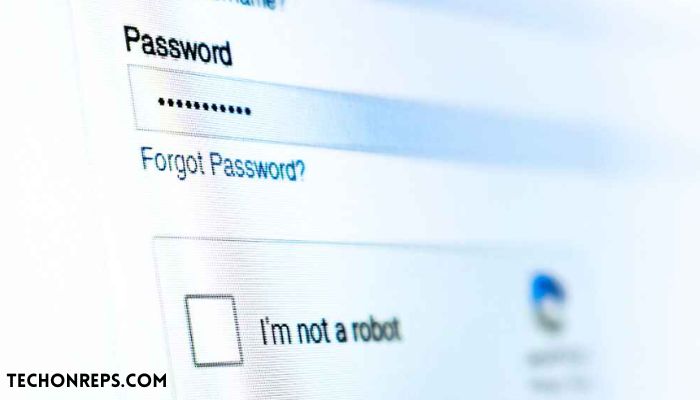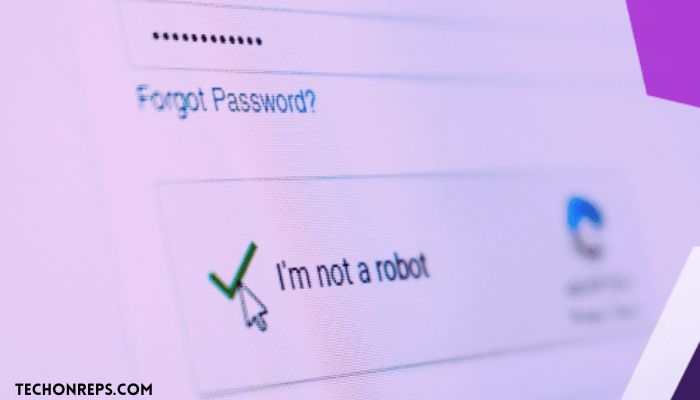Breaking the Code: I’m Not a Captcha Phrase
Captcha, which stands for Completely Automated Public Turing test to tell Computers and Humans Apart, is a security measure used on websites to determine whether the user is a human or a bot. It is designed to prevent automated software from performing certain actions that could be harmful or abusive. Captcha is an essential tool in online security as it helps protect websites and their users from fraud, spam, and other malicious activities.

The Evolution of Captcha Technology
The history of captcha technology dates back to the late 1990s when researchers at Carnegie Mellon University developed the first captcha system called CAPTCHA. It was a simple text-based system that required users to enter distorted characters displayed on the screen. This system was effective in distinguishing humans from bots as it was difficult for automated software to recognize and interpret the distorted characters.
Over the years, captcha technology has evolved to include various types of challenges that are more difficult for bots to solve. Some of the different types of captcha systems include image-based captchas, where users are required to select specific images that match a given description, and audio captchas, where users have to listen to and transcribe a series of spoken words or numbers.
The Importance of Captcha in Online Security
Captcha plays a crucial role in online security by preventing automated software from carrying out malicious activities. It helps protect websites from spam, brute force attacks, account takeover attempts, and other forms of abuse. By requiring users to prove their humanity through captcha challenges, websites can ensure that only legitimate users are able to access certain features or perform certain actions.
One example of how captcha has been used to protect sensitive information is in online banking. When users log in to their online banking accounts, they are often required to solve a captcha challenge before gaining access. This additional layer of security helps prevent unauthorized access to sensitive financial information and reduces the risk of fraud.
The Limitations of Traditional Captcha Systems
While traditional captcha systems have been effective in preventing automated software from solving them, they are not foolproof. Bots have become increasingly sophisticated and can sometimes bypass traditional captcha systems. They can use advanced image recognition algorithms to decipher distorted characters or use machine learning techniques to learn and adapt to the challenges presented by captchas.
There have been instances where bots have successfully solved traditional captcha systems, allowing them to carry out malicious activities such as creating fake accounts, sending spam emails, or launching distributed denial-of-service (DDoS) attacks. This highlights the need for more advanced captcha systems that are more difficult for bots to bypass.
The Emergence of ‘I’m Not a Robot’ Captcha
In response to the limitations of traditional captcha systems, Google introduced a new captcha system called “I’m Not a Robot” in 2014. This captcha system uses advanced machine learning algorithms to distinguish between humans and bots. Instead of requiring users to solve a challenge, it simply asks them to click on a checkbox that says “I’m Not a Robot.”
How ‘I’m Not a Robot’ Captcha Works
The “I’m Not a Robot” captcha works by analyzing the user’s behavior and interaction with the website to determine whether they are a human or a bot. It uses machine learning algorithms to analyze factors such as mouse movements, keyboard inputs, and browsing patterns to make this determination. If the system detects suspicious behavior that is indicative of a bot, it may require the user to solve additional challenges, such as selecting specific images or transcribing spoken words.
This new approach to captcha has significantly improved online security by making it more difficult for bots to bypass the system. The machine learning algorithms used in the “I’m Not a Robot” captcha are constantly learning and adapting to new threats, making it increasingly difficult for bots to mimic human behavior and pass the captcha challenge.
The Benefits of ‘I’m Not a Robot’ Captcha
The introduction of the “I’m Not a Robot” captcha has not only improved online security but also enhanced the user experience. Unlike traditional captcha systems that often require users to decipher distorted characters or listen to audio recordings, the “I’m Not a Robot” captcha is quick and easy to complete. Users simply have to click on a checkbox, which takes only a few seconds.
This streamlined user experience has made online interactions easier and more convenient for users. They no longer have to spend time deciphering distorted characters or listening to audio recordings, which can be frustrating and time-consuming. The “I’m Not a Robot” captcha has reduced friction in online interactions, making it more likely that users will complete the desired action without abandoning the process.
The Role of Machine Learning in ‘I’m Not a Robot’ Captcha
Machine learning plays a crucial role in the effectiveness of the “I’m Not a Robot” captcha. The machine learning algorithms used in this captcha system are constantly analyzing and learning from user behavior to improve their ability to distinguish between humans and bots. This adaptive approach allows the system to stay one step ahead of bots and makes it increasingly difficult for them to bypass the captcha challenge.
The use of machine learning in the “I’m Not a Robot” captcha has significantly improved online security by reducing the risk of bot-driven fraud and abuse. It has also helped protect sensitive information by making it more difficult for bots to gain unauthorized access to websites and user accounts.
The Future of Captcha Technology
As technology continues to evolve, captcha technology is expected to evolve as well. Researchers and developers are constantly working on new captcha systems that are more secure and user-friendly. One example is the use of biometric authentication, such as fingerprint or facial recognition, as a captcha challenge. This would further enhance security by requiring users to prove their identity using unique biometric features.
Another area of development is the use of artificial intelligence (AI) to create more intelligent and adaptive captcha systems. AI-powered captchas would be able to analyze and understand user behavior in real-time, making it even more difficult for bots to bypass the system. These advancements in captcha technology will continue to play a crucial role in online security and user experience.
The Impact of ‘I’m Not a Robot’ Captcha on User Experience
The introduction of the “I’m Not a Robot” captcha has had a significant impact on user experience. It has made online interactions quicker and easier for users by eliminating the need to solve complex challenges. Users can now complete the captcha process with just a single click, which takes only a few seconds.
This improved user experience has resulted in higher conversion rates and reduced abandonment rates. Users are more likely to complete the desired action, such as signing up for a service or making a purchase, when the captcha process is quick and easy. The “I’m Not a Robot” captcha has helped streamline online interactions and make them more user-friendly.
The Role of Captcha in Preventing Online Fraud and Abuse
Captcha plays a crucial role in preventing online fraud and abuse by ensuring that only legitimate users are able to access certain features or perform certain actions. By requiring users to prove their humanity through captcha challenges, websites can effectively block automated software from carrying out malicious activities such as creating fake accounts, sending spam emails, or launching DDoS attacks.
Captcha has been used in various industries to protect sensitive information and prevent unauthorized access. For example, in the healthcare industry, captcha is often used to protect patient records and prevent unauthorized access to medical information. In the e-commerce industry, captcha is used to prevent automated bots from making fraudulent purchases or stealing sensitive payment information.
Conclusion:
Captcha is an essential tool in online security that helps protect websites and their users from fraud, spam, and other malicious activities. The evolution of captcha technology has led to the development of more advanced systems, such as the “I’m Not a Robot” captcha, which uses machine learning to distinguish between humans and bots. This new approach has significantly improved online security and user experience.
As technology continues to advance, captcha technology is expected to evolve as well. Researchers and developers are constantly working on new captcha systems that are more secure and user-friendly. These advancements will continue to play a crucial role in online security and user experience, ensuring that websites remain protected from fraud and abuse while providing a seamless and convenient experience for users.



